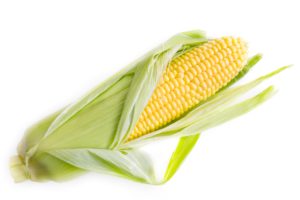
Corn on the Cob
Thrips and worms
» Can be found between the kernels of corn.
Fresh corn on the cob, especially in the warm summer months (June – September), can be infested with worms and thrips. When fresh corn on the cob is purchased and the husk is removed, worms can be very clearly seen
crawling on the inside part of the husk. Even though the husk portion is thrown away and the cob is thoroughly washed, there is a concern that worms/thrips might make their way between the kernels.
Based on this information, corn on the cob should not be barbequed in the husk.
In general, there is a difference of opinion among experts regarding fresh corn on the cob. For example, in Israel and in various hashgachos in America, fresh corn on the cob is not used. This is due to the presence of small orange/yellow thrips that are extremely difficult to distinguish from the corn itself. Additionally, in Israel, frozen corn on the cob is used only when bearing a reliable hashgachah indicating that the crop has been thoroughly inspected.
Presently, experts in the field of בדיקת תולעים here in America are doing further research to clearly ascertain the status of both fresh and frozen corn on the cob. The goal of this research is to accurately determine whether there is a frequent enough occurrence of finding the above-mentioned yellow/orange thrips to categorize corn on the cob as
Miut HaMatzui. This research will also include whether there is a difference in corn on the cob during different seasons of the year and whether there are differences based on the corn’s geographical origin.
